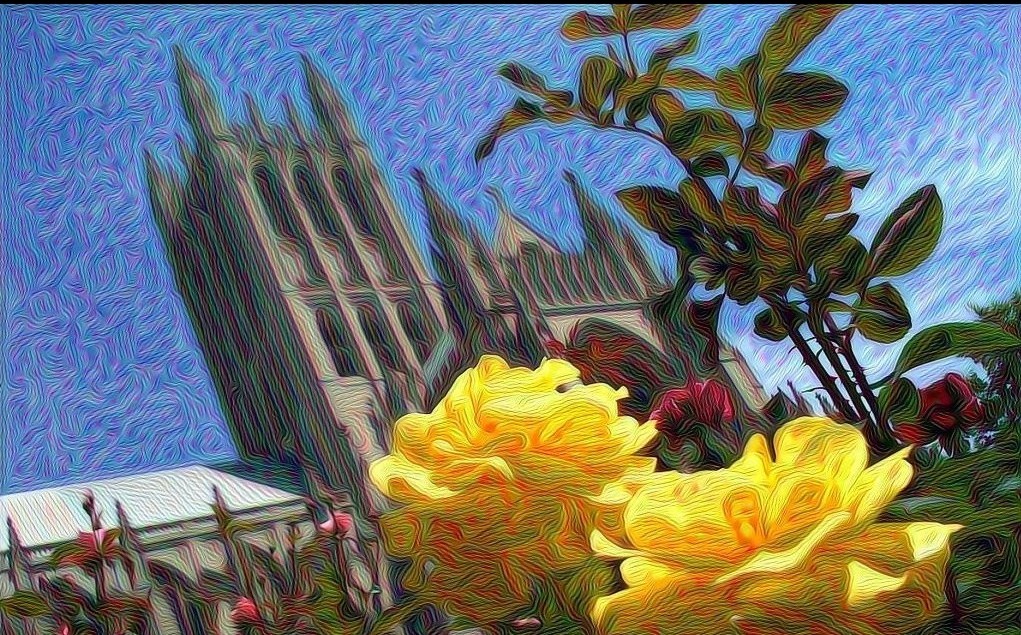
Cannabis shows potential to treat dyskinesia in patients with PD. Image Source: Flickr user Edwin Lee.
In 1970, Oliver Sacks wrote five letters to various medical journals in the U.S. expressing his concern about the prescription drug levodopa, which had been developed just a year earlier. As a practicing neurologist, he had used levodopa (L-Dopa) to treat Parkinson’s and encephalitis lethargica (or “sleepy-sickness”) in his patients—both neurological disorders that arise from a deficiency of dopamine—and found it to have serious adverse effects. As he described in his 1985 book The Man Who Mistook His Wife for a Hat, treating people with sleepy-sickness with L-Dopa resulted in an over-correction of motor function: “First they were ‘awakened’ from stupor to health: then they were driven towards the other pole—of tics and frenzy.”
This phenomenon would come to be known as levodopa-induced dyskinesia—an increase in involuntary muscle movements or spasms that results from too much dopamine flooding your brain. It’s one of the most common side effects of conventional treatment of Parkinson’s Disease (PD) and one of the most devastating: some PD patients describe their dyskinesia as worse than the disease itself, causing many to decrease or put off treatment altogether to stave off the inevitable side effects.
The search for a better treatment has pointed more and more researchers toward cannabis because it naturally targets multiple points in the endocannabinoid system, the brain’s neurological center for motor function, mood, and pleasure. Marijuana has been shown to have impressive results in the short term treatment of PD symptoms, like tremors and rigidity, and it also has supplemental therapeutic effects—like easing depression and improving sleep. But perhaps most importantly, cannabis has shown promising results in preventing dyskinesia.
What Is Levodopa-Induced Dyskinesia?
Because Parkinson’s is classically defined as a dopamine deficiency—caused by the death of dopamine-producing cells in a part of the brain called the substantia nigra—it’s most commonly treated with a dopamine precursor like levodopa, which then converts to dopamine in the brain. The effects from initial doses of levodopa are quite immediate—people’s motor functions are restored almost miraculously in some cases—but experience shows that long-term dopamine-based treatment can actually cause an increase in dyskinesia.
The problem arises from dopamine’s role as a neurotransmitter and the tricky balance of the neurons in your brain. In a healthy brain, dopamine transmits signals between brain cells about motor function, mood, and behavior, among other things. But in the Parkinsonian brain, low levels of dopamine mean two parts of the brain related to motor function—the endocannabinoid system and basal signia—are not signaling correctly. This is what causes the most well-known symptoms of Parkinson’s: body rigidity, tremors, and involuntary muscle contractions.
Supplementing dopamine with a drug like levodopa attempts to restore the neurological balance, but history shows the solution isn’t perfect because long-term treatment often results in dopamine hyperactivity, which manifests as dyskinesia. This most often affects younger people with PD, which is particularly disconcerting because they have longer to live with the disease and the side effects of treatment.
Cannabinoids and Parkinson’s Disease
Almost fifty years after Sacks wrote his letters of warning, levodopa is still the most commonly prescribed treatment for Parkinson’s Disease, but the medical community is calling for a more sophisticated medicine that mirrors the function of the lost dopamine cells in the brain. And that leads us to cannabis.
Cannabis has shown tremendous promise in treating PD, both in the laboratory and in practice. A 2004 survey of 339 PD patients showed that smoking cannabis significantly improved symptoms in 46% of participants, including reduced tremors, rigidity, bradykinesia, and dyskinesia. Cannabis has also shown to decrease dystonia, another type of repetitive or twisting movement caused by involuntary muscle contractions.
A look into the relationship between cannabinoids and motor functions show why marijuana is an ideal target for the treatment of motor disorders:
Cannabis activates the endocannabinoid system, which affects motor function, mood, and pleasure. With 113 cannabinoids and counting, cannabis activates parts of the brain that dopamine treatment alone does not. In particular, cannabis activates CB1 receptors in high concentrations in three parts of the brain associated with dyskinesia and Parkinson’s: the globus pallidus, basal ganglia, and substantia nigra. This is important because, as studies have shown, activation of CB1 receptors—which comes from ingesting the marijuana cannabinoid THC—offers neuroprotection and prevents the development of dyskinesia in mice.
Cannabis increases more than just dopamine—it affects other neurotransmitters, too. Historically, Parkinson’s has been understood as a simple case of dopamine deficiency, but recent research from Harvard University suggests that dopamine neurons also transmit GABA, a neurotransmitter that dampens the effect of dopamine. This means that when neurons die in the course of the disease, there would also be a GABA deficiency. Because GABA plays an important role in dampening the effect of dopamine by inhibiting the electrical activity of cells, its decrease in PD would help explain why isolated dopamine treatment sometimes results in dyskinesia.
Conversely, it makes sense then, that a treatment that also increases GABA would inhibit dopamine hyperactivity and so dampen the extreme effects of dyskinesia. The research on cannabis in that area is promising: one study on the synthetic cannabinoid nabilone showed that it decreased the incidence of levodopa-induced dyskinesia, noting that the cannabinoids “enhance GABA transmission and may thus alleviate dyskinesia.” The study went on to suggest that this might be because cannabinoids interact with the globus pallidus, which is thought to be overactive in cases of dyskinesia.
Cannabis treats other common symptoms of Parkinson’s. There are other benefits to cannabinoids in addition to their effect on motor dysfunction. Thanks to their anti-oxidative and anti-inflammatory effects, cannabinoids are also neuroprotective, meaning they help protect against further degeneration of precious neurons. Cannabinoids have also been shown to relieve pain, have antidepressant effects, and improve sleep—all problems PD patients commonly face.
The Trick of Treating Neurological Diseases
In the end, Parkinson’s cannot be summed up simply as a deficiency of dopamine, and Oliver Sacks would agree. “There are also much subtler and more widespread changes,” he concluded in his book. “There are countless subtle paths of abnormality which differ from patient to patient, and from day to day in any one patient.”
That’s to say, neurological diseases are notoriously tricky beasts, with varying symptoms from day to day—what works for one person may not for another. There probably will never be a one-size-fits-all solution for Parkinson’s Disease, but diversifying our arsenal of medicines and continuing studies on medical marijuana can only lead to better long-term treatment without debilitating side effects. With further research and continuing legalization measures, cannabis could become the long-term dyskinesia treatment so many PD patients are looking for.









